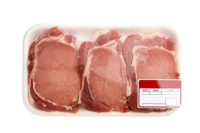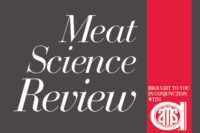Modified-atmosphere packaging containing 80% oxygen and 20% carbon dioxide (HiOx-MAP) is widely used in fresh beef at retail to delay discoloration and hold cherry-red color of beef for a longer time. However, previous studies have shown that HiOx-MAP considerably decreases tenderness of beef steaks during retail display. The decrease in tenderness is due to protein oxidation, which likely leads to protein polymerization (aggregation).
There is more to discover about protein oxidation, especially its mechanism and control measures.
Most are familiar with lipid oxidation — which gives rise to off-flavors. Pigment (myoglobin) oxidation is responsible for brown color development. Protein oxidation (a third type of oxidation) has received much less attention in meat-science circles.
Several scientists have shown that lipid oxidation more rapidly promotes protein oxidation in meat than compounds produced from myoglobin oxidation. Therefore, any factor which increases lipid oxidation in muscle foods, such as aging time and amount of dietary antioxidants, would likely boost protein oxidation and reduce tenderness.
When cattle are fed wet distillers grains plus solubles (WDGS) there is an increase in polyunsaturated fatty acids in the meat. These fats are most susceptible to oxidation. Thus, meat from cattle fed WDGS tends to discolor more rapidly upon exposure to oxygen.
We investigated the effects of HiOx-MAP, aging time, feeding WDGS, and dietary supplementation with an antioxidant (AGRADO®PLUS, Novus International Inc., MO) on protein oxidation and instrumental tenderness of beef strip loin steaks during retail display.
Results showed that toughening of beef in HiOx-MAP during retail display was mainly due to oxidation of muscle proteins, especially the contractile protein myosin. Oxidation caused formation of strong disulfide bonds between myosin filaments, thereby forming protein aggregates which toughened the beef. The normal tenderization process from enzymes was reduced by HiOx-MAP during retail display. Beef aged longer (29 d aged) toughens to a higher degree than short-term (8 d) aged beef due to higher protein oxidation and protein aggregation.
The antioxidant supplement (AGRADO®PLUS) used in the study acted as a pro-oxidant toward proteins, an antioxidant towards lipids, and also toughened beef.
Therefore, feeding this antioxidant was not effective in protecting beef from toughening in HiOx-MAP packages.



Report Abusive Comment